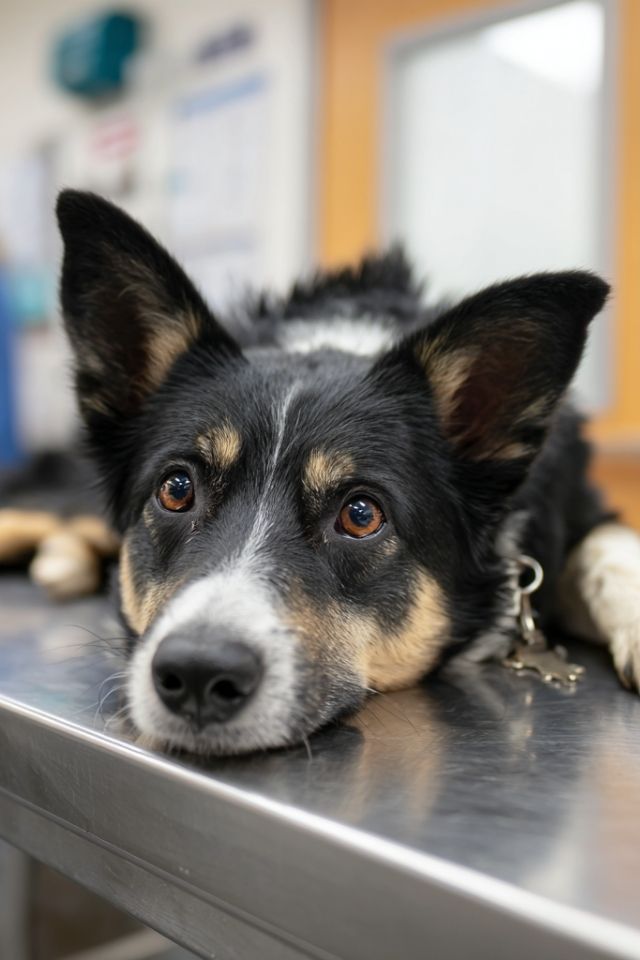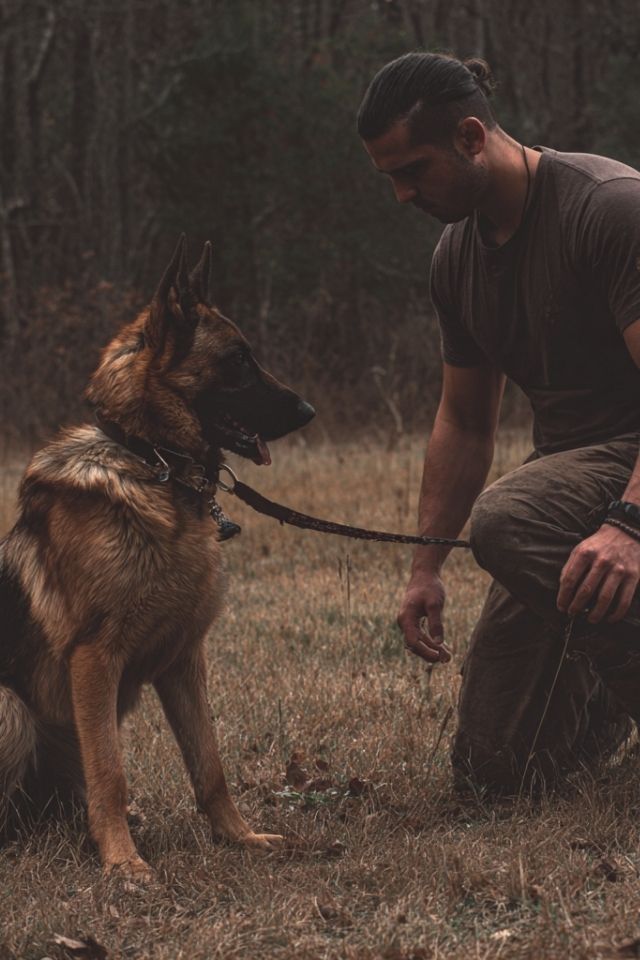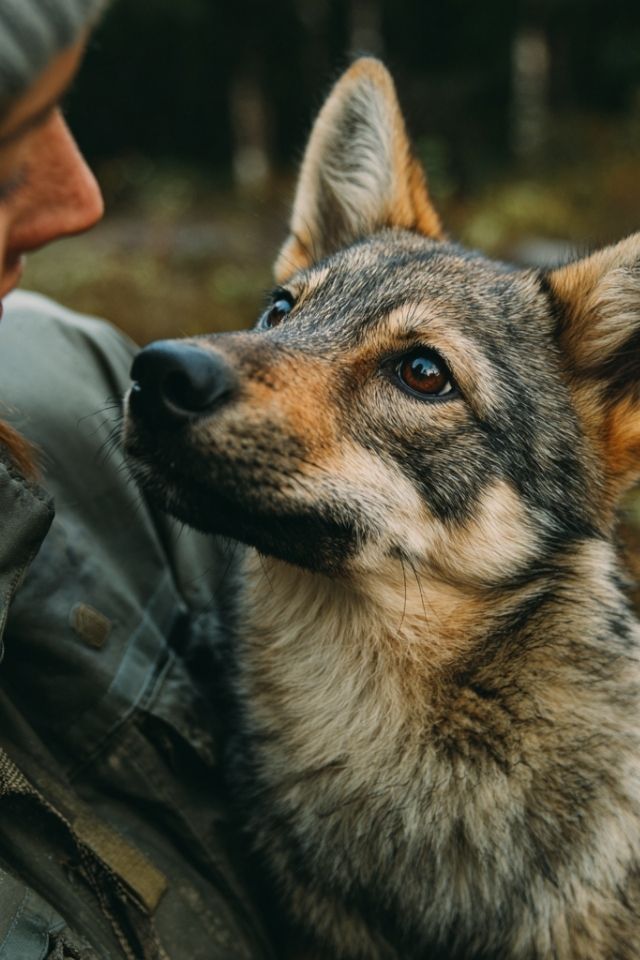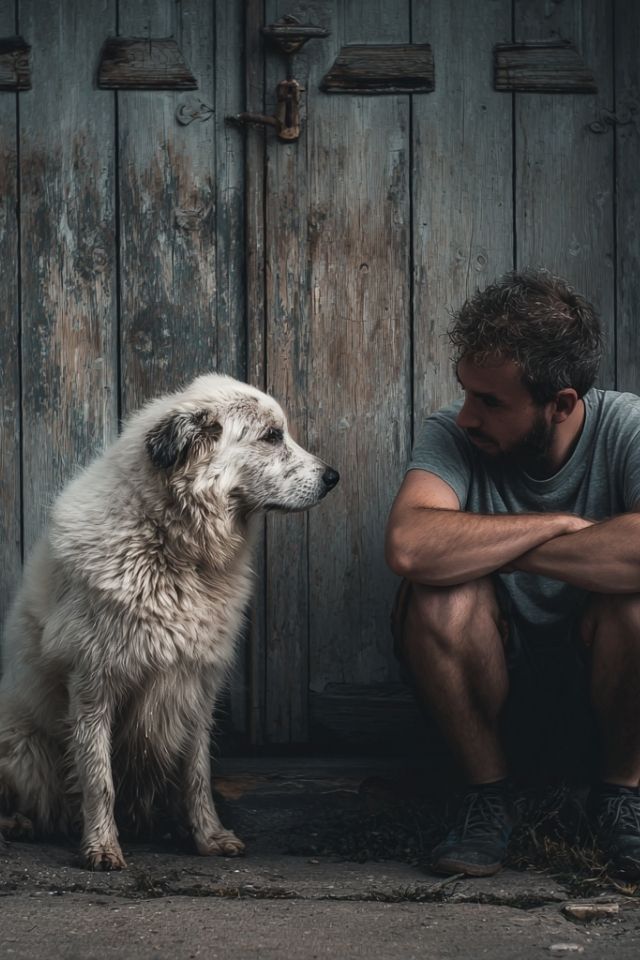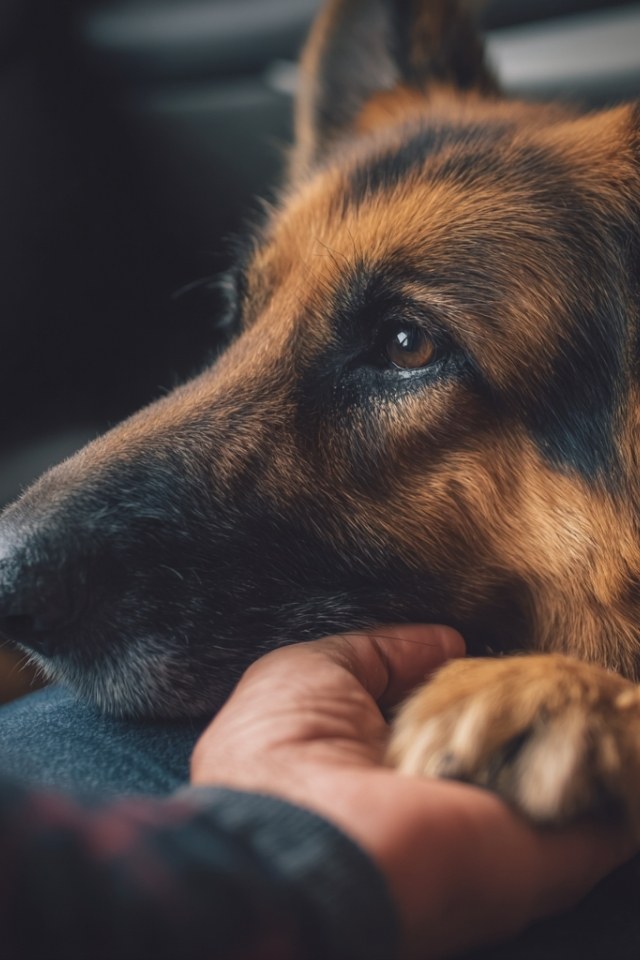There’s a moment every dog guardian knows—when something shifts in the air between you and your companion. Maybe it’s the way your dog’s eyes flicker toward the door before the doorbell rings, or how their breathing changes when thunder rumbles in the distance. These moments are whispers, quiet communications that happen before the obvious signs we’ve been taught to recognize. Before the tucked tail. Before the trembling. Before the retreat.
Fear in dogs doesn’t announce itself with fanfare. It arrives softly, in the language of displacement and subtle withdrawal, speaking through signals we often miss until they become impossible to ignore. But what if we could learn to hear these whispers? What if we could understand our dogs in those delicate moments before fear takes full hold?
This is the journey we’re about to take together—into the intimate world of canine fear, where neuroscience meets lived experience, and where learning to listen changes everything.
The Architecture of Fear: What Happens Beneath the Surface
Picture this: Your dog catches sight of something through the window—perhaps a person in a hat, walking with a particular gait. In that instant, before you’ve even noticed the change, a cascade begins deep within your dog’s brain. The amygdala, an ancient structure shaped like an almond and nestled in the emotional center of the mind, lights up with recognition. Not thought. Not decision. Pure emotional memory.
Researchers studying dogs in fMRI scanners discovered something profound. Even when dogs were physically restrained—unable to run, unable to show the full expression of their fear—their amygdala blazed with activity. The fear was there, complete and consuming, hidden beneath the surface of stillness. This taught us something crucial: what we see on the outside is only part of the story. Your dog may appear calm, but internally, a storm may be building.
Within seconds, the body responds. Heart rate climbs. Cortisol—the stress hormone—floods the bloodstream. Muscles tense. Pupils dilate, even in bright light. Your dog’s entire physiology shifts into an ancestral mode: prepare, protect, survive. Through the NeuroBond lens, we recognize these aren’t just mechanical processes—they’re the physical echoes of emotional experience, the body translating what the heart feels into tangible response.
And here’s where individual stories diverge. One dog, shaped by early experiences of safety and gentle exposure, may recover quickly from this activation. Another, carrying the weight of past trauma or the genetic sensitivity of their breed, may spiral deeper into fear. The same trigger, two completely different internal journeys.
The Poetry of Displacement: Reading the Early Signs
Before your dog cowers, before they flee, they speak in a different language entirely. It’s a language of displacement behaviors—actions that seem oddly out of context, almost poetic in their indirectness.
Watch a dog approached by a stranger they find unsettling. Suddenly, the ground becomes fascinating. They sniff intently at nothing in particular, their nose tracing invisible patterns on the floor. It looks like distraction, but it’s actually communication: I need a moment. I need to orient myself. I’m not ready for this interaction.
Or perhaps you’re at the veterinary clinic, waiting room quiet except for the distant sound of a dog barking somewhere in the back. Your dog yawns—deeply, dramatically, their mouth stretching wide. They’re not tired. They’re speaking stress into the air, releasing tension the only way they know how.
The lip lick. The tongue flicks out, quick as thought, moistening a nose that doesn’t need moistening. Again. And again. A tiny gesture, but one that signals the internal weather is changing.
These moments are gifts, really. They’re your dog trying to tell you something before the fear grows too large to manage. Research tracking dogs during fireworks displays found that these subtle signs often appear first, followed by increased stillness—a freezing response where dogs try to become invisible, to disappear into the safety of immobility.
There’s another sign, subtle and often missed: the whale eye. Your dog’s head faces one direction, but their eyes track something else, and in that sideways glance, you catch the white crescent of the eye. It’s a look of monitoring without confronting, of awareness without engagement. It says, I see you. I’m watching. I’m not sure about this.
The Invisible Leash teaches us that awareness flows both ways. When we become attuned to these whispers, we’re not just observing—we’re participating in a conversation. We’re learning the vocabulary of our dog’s inner world.
When Whispers Become Words: Progressive Fear Signals
As fear intensifies, the communication shifts from subtle to unmistakable. Scientists analyzing thousands of dogs using AI-powered facial recognition discovered that ear position is one of the most reliable indicators of rising fear. The ears, which normally stand alert or rest naturally, begin pulling backward, flattening against the skull as if trying to make the body smaller, less noticeable.
Then the body follows. The confident posture lowers. Where there was height and presence, now there’s compression—your dog making themselves smaller, their center of gravity dropping closer to the ground. The tail, that expressive flag of emotion, curves downward and tucks between the legs, protecting vulnerable areas and signaling, I am not a threat. Please don’t see me as one.
Even breathing changes. Panting begins, rapid and shallow, even on cool days when no exercise has occurred. The mouth opens wider, sometimes in that particular way researchers noted in their studies—increased mouth-opening that reflects not heat, but internal distress.
Trembling arrives next. The muscles, flooded with stress hormones and locked in tension, begin to shake. It starts small, perhaps just a quiver in the hindquarters, and can spread throughout the entire body. And throughout all of this, your dog is scanning—head movements quick and purposeful, searching for exits, for safety, for anything that might offer refuge.
This progression tells a story. It’s the story of escalation, of fear growing from manageable concern to overwhelming distress. And here’s what matters most: every step along this path is a moment where intervention can change the trajectory.
The Body Remembers: Physiological Markers of Fear
There are truths the body cannot hide. While your dog might suppress some behavioral signals—especially under restraint or in controlled environments—their cardiovascular system tells the story their posture might conceal.
Heart rate variability has become one of the most revealing windows into canine emotional states. When dogs are relaxed and adaptable, there’s beautiful variation in the time between heartbeats—a kind of physiological flexibility that speaks to resilience. But when fear takes hold, this variation decreases. The heart rhythm becomes more rigid, more locked, reflecting the internal state of being braced against threat.
Then there’s cortisol, that molecular messenger of stress. Blood tests can capture it, revealing the chemical signature of fear. What researchers have found is sobering: effective interventions—whether behavioral or pharmaceutical—lower these cortisol levels. The body relaxes at a cellular level. This matters because chronically elevated cortisol doesn’t just signal distress; it creates it, wearing down the immune system and reshaping behavior over time.
Even the eyes participate in this physiological story. Pupils dilate during fear, preparing for better vision in what the brain perceives as a dangerous moment. Paw pads sweat, leaving damp prints on examination tables. The coat sheds more readily, as if the body is trying to lighten itself for flight.
These aren’t just clinical observations. They’re the body’s honest testimony, the ways our dogs’ physiology translates emotion into measurable reality.
The Mirror We Bring: Understanding Our Own Bias
Here’s something humbling to consider: even professionals trained in canine behavior struggle to reach consensus on what they’re observing. Studies of clinical animal behaviorists revealed remarkable disagreement on identifying certain emotional states. If experts can’t always align, what does that mean for those of us who love our dogs but lack formal training?
We bring ourselves to every observation. Our hopes. Our histories with other dogs. Our very human tendency toward anthropomorphism—projecting our own emotional experiences onto beings with entirely different internal landscapes. When your dog refuses to greet a visitor, you might interpret it through the lens of human social dynamics: rudeness, antisocial behavior, stubbornness. But your dog isn’t operating in that framework. They’re simply fearful, trying to maintain safe distance in the only way they know.
Perhaps even more challenging is habituation blindness. When you live with a chronically anxious dog, their baseline becomes your normal. The constant vigilance, the startle responses to ordinary sounds, the inability to fully settle—all of this fades into the background of daily life. You stop seeing it as fear and start thinking of it as just “how they are.”
Soul Recall reminds us that memory and emotion are woven together in ways we often don’t recognize. What looks like personality might actually be learned response. What seems like preference might be rooted in old fear, so well-established it’s become invisible even to those who love the dog most.
This isn’t about judgment. It’s about awareness. Recognizing our biases is the first step toward seeing more clearly.
The Context That Shapes Expression
Fear doesn’t exist in a vacuum. It lives and breathes within specific moments, shaped by everything surrounding it. Researchers studying fear responses have used fireworks as a controlled trigger, watching how the same dogs respond differently depending on the context—the New Year’s Eve chaos versus a quiet control evening.
Environment matters profoundly. A dog confident around vacuum cleaners at home might become terrified of similar sounds in the unfamiliar space of a veterinary clinic. Why? Because fear isn’t just about the stimulus itself—it’s about everything else occurring simultaneously. The strange smells. The confined space. The presence of other anxious animals. The memory of past experiences in similar settings.
One of the most significant discoveries in recent research involves restraint. Dogs held in fMRI scanners showed intense amygdala activation—their brains lit up with fear—yet their behavior remained controlled. They didn’t display the aggression or panic that might have emerged if they were free to act. This reveals something crucial: physical restriction doesn’t eliminate internal fear. It only suppresses its expression.
Think about what this means for every leash walk, every veterinary restraint, every moment when your dog cannot freely choose their response. The fear may still be there, complete and consuming, even when their body appears calm. This is why gentle handling isn’t just kind—it’s essential to truly understanding what your dog is experiencing.
Breed, age, and personal history layer additional complexity. A herding breed’s genetic sensitivity to movement. A senior dog’s growing uncertainty as their senses dim. A rescue dog carrying memories of experiences you’ll never fully know. Each brings their own threshold, their own way of coping, their own story written in behavior.
Technology Meets Intuition: The Future of Understanding
Something remarkable is emerging at the intersection of artificial intelligence and canine behavior. Systems now exist that can analyze dog facial expressions in real-time, even in chaotic environments like New Year’s Eve fireworks displays. Using 36 facial landmark points, these programs quantify emotional states with objectivity humans cannot match.
Computer vision tracks micro-movements—the millisecond shifts in ear position, the subtle changes in eye shape, the tension patterns in facial muscles. These are changes that blur past human perception in real-time but carry meaning nonetheless.
Yet technology, for all its precision, remains a tool. It can tell us what is happening with unprecedented accuracy, but not always why it matters to this particular dog in this particular moment. The numbers and patterns need the context only relationship provides—your knowledge of your dog’s history, their triggers, the small victories and setbacks that have shaped their emotional landscape.
That balance between science and soul—between objective measurement and intuitive understanding—that’s the essence of Zoeta Dogsoul. Neither is complete without the other.
From Recognition to Response: Building Safety
Understanding fear is only the beginning. The real work lies in response—in what we do with the knowledge we’ve gathered. In veterinary clinics, this understanding is transforming care. The “Fear Free” movement trains staff to recognize early fear signals and respond before escalation. Low-stress handling. Strategic breaks. Calming interventions that lower cortisol levels before procedures begin.
But perhaps the most important intervention happens long before fear becomes crisis. It happens in the daily work of desensitization and counter-conditioning, those systematic approaches that gradually reshape emotional responses. Exposing your dog to fear triggers at intensities low enough that fear doesn’t activate, then pairing those exposures with positive experiences. Slowly. Patiently. At your dog’s pace, not yours.
This requires exquisite sensitivity to those early signals we’ve discussed. You must recognize the moment your dog approaches their threshold and adjust before they cross it. Push too fast, and you risk sensitization—making the fear worse. Move at the right pace, and transformation becomes possible.
The progression from fear to aggression is well-documented in behavioral research. Fear-based aggression is defensive, a last resort when all other distance-increasing signals have failed. When the freeze doesn’t work, when retreat isn’t possible, when subtle communications are ignored—then comes the snap, the lunge, the bite. This progression is preventable. Early intervention changes outcomes.
Home as Haven: Creating Safety
Your home should be the place where your dog’s nervous system can finally rest. For fearful dogs, this might mean creating specific safe spaces—quiet corners where they can retreat when the world becomes too much. Soft bedding. Familiar scents. Perhaps white noise to buffer sudden sounds.
Predictability becomes a gift. When meals arrive at consistent times, when walks follow familiar routes, when bedtime rituals remain stable—your dog’s baseline anxiety decreases. They know what comes next. The world becomes a little less uncertain.
But safety isn’t just about physical space. It’s about relationship. Dogs with strong bonds to their humans—built through thousands of small moments of responsive communication—show greater resilience when facing fear. Your presence becomes their anchor. Your awareness of their emotional state becomes their safety net.
The Partnership of Healing
You are your dog’s most consistent observer, witnessing their behavior across contexts professionals never see. This makes your input invaluable in assessment. But unstructured observation has limits, shaped by the biases we’ve discussed. This is why structured tools exist—questionnaires that ask specific behavioral questions rather than requiring emotional interpretation.
When fear becomes severe, when it interferes with quality of life or progresses to aggression, professional help becomes essential. Certified behaviorists and veterinary specialists bring frameworks built on research and experience. They can design systematic intervention plans, monitor progress through objective measures like cortisol levels, and adjust approaches when needed.
This partnership—between your intimate knowledge and professional expertise—creates the strongest foundation for change. You implement the daily work. They provide the roadmap. Together, you support your dog’s journey toward confidence.
The Ongoing Conversation
Understanding canine fear isn’t a destination. It’s an ongoing conversation, a deepening relationship built through attention and response. Every time you notice that subtle lip lick and adjust your approach, you’re speaking your dog’s language. Every time you recognize rising fear and intervene before panic, you’re building trust.
Dogs whose fear is recognized and respected don’t just become better behaved. They become more themselves—able to relax into joy rather than constant vigilance, to explore rather than simply survive, to trust that you’re reading their signals and responding with care.
The journey requires patience. It asks us to question our assumptions, to see beyond what we expect to find, to remain curious about our dogs’ internal experiences even after years together. It challenges us to grow our awareness while honoring the limits of what we can truly know about another being’s subjective experience.
But the reward is immeasurable. It’s there in the moment your fearful dog voluntarily approaches something they once avoided. In the softening of their body when they seek comfort from you. In the gradual expansion of their world as confidence replaces fear.
Through awareness, compassion, and commitment to learning your dog’s unique language, you’re doing more than identifying fear. You’re building a foundation of trust that supports every aspect of your relationship. Every moment spent understanding your dog’s emotional world deepens the connection between you, creating the kind of partnership where both beings feel truly seen.
This is the promise and the practice—attention as love, understanding as care, and the ongoing choice to listen when your dog speaks, even in whispers.
